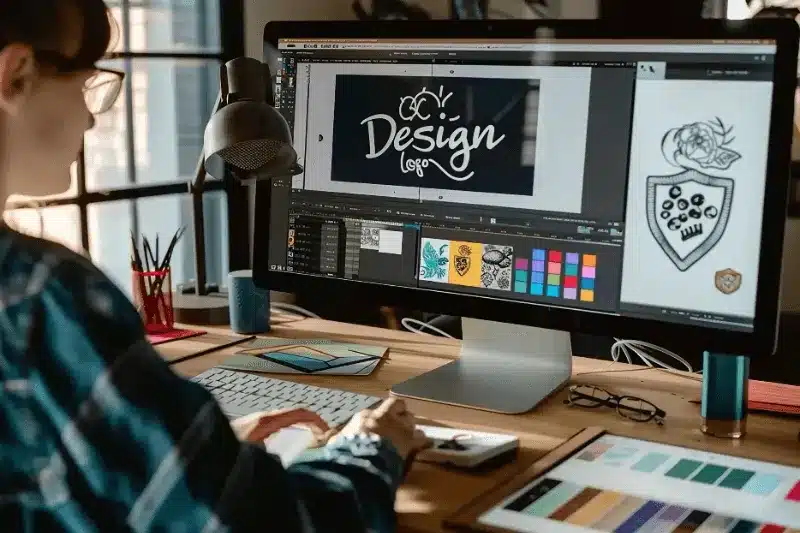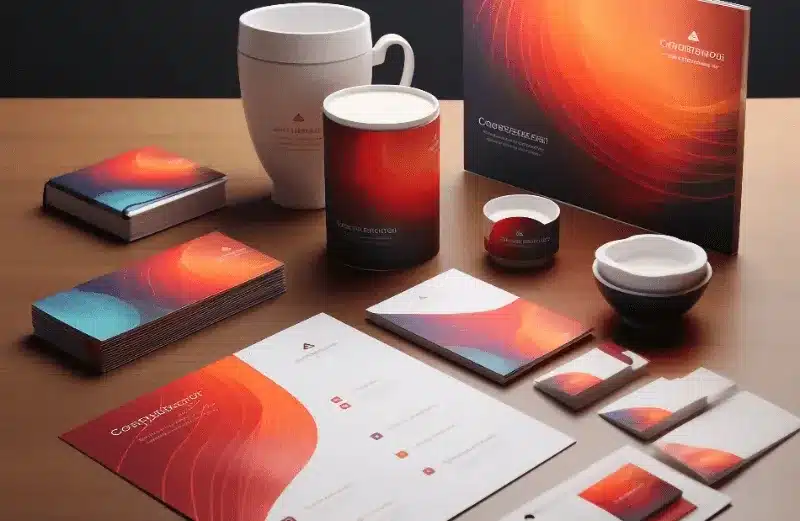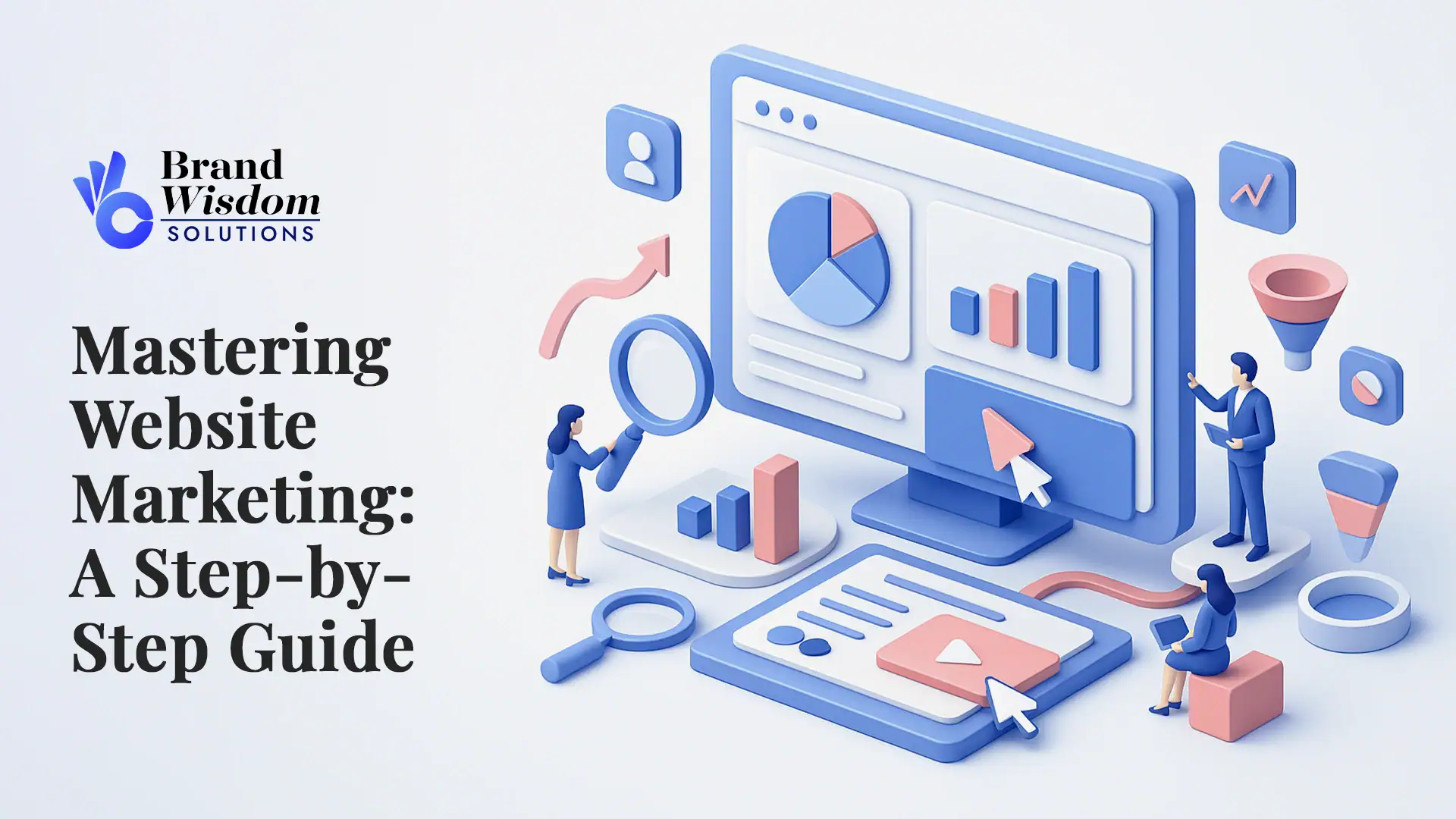Visual identity: Today, branding and marketing are important for today’s competitive markets. Companies struggle to gain attention; a good brand translates into that line that divides between success and oblivion. The key lies in visual identity, the visual elements of a brand that communicate values, personality, and promise to its audience.
It’s more than a logo or colors; it’s the imagery of your brand. It creates first impressions, brings out emotions, and builds a connection with your audience. Whether on a website, a social media post, or a business card, your visual identity is what people see first and often is what they remember.
In this blog, we look at the importance of visual identity to branding and marketing. We shall look at how effective visual identity can make a brand recognizable, attach people emotionally to a brand, and how this improves marketing. From the basics of creating a visual identity to overcoming some challenges that get in the way, here’s all you need to know to make your brand stand out from the crowd.
What is Visual Identity?

The visual identity is the group of visual elements that reveal and communicate a brand to its target audience. It involves the logotype, colors, typeface, imagery, graphic elements, and design style. These components interact to give an apparent and vivid representation of a brand and help share its values, personality, and main message. The term ‘visual identity’ is very often used as synonymous with brand identity, but it’s actually a subpart of the latter. Brand identity will really refer to everything that contributes to a brand’s overall imagery and reputation, including things such as mission, vision, values, tone of voice, and feelings evoked in customers by said brand. This presentation limits itself to the visual part of this identity, which means the visible one.
Key components of visual identity include:
| Logo | The most recognizable symbol of a brand, often encapsulating its essence in a simple graphic. |
| Color Scheme | The colors chosen to represent the brand can evoke certain emotions and associations. |
| Typography | The fonts used in branding materials contribute to the brand’s personality and readability. |
| Imagery | The style of images, illustrations, and photography used by the brand to support its message. |
| Graphic Elements | Additional design elements like icons, patterns, and textures help unify the visual presentation. |
With a clear visual identity, brand messages become coherent and fully aligned with the overall strategy of the brand. This develops trust and affinity, making it much easier for customers to identify themselves with the brand.
Branding: The Importance of Visual Identity

The visual identity is quite crucial to be developed and enhanced for a brand in the marketplace. It’s not just about looking good; it’s about making a mark in the minds of people that will attach your target audience with your brand and distinct from others. Let’s dive deep into exactly how visual identity affects branding:
Establishing Brand Recognition
A consistent look across every touchpoint-whether that is your website, social media, packaging, or ads-helps customers remember your brand. When customers repeatedly see the same colors, fonts, and logos over and over again, their brains eventually associate those elements with your brand. This reinforces that eventually, this will be something which will make it very easy for customers to tell and remember amidst several other brands.
Making Emotional Connections
Colors, shapes, and images can really have a big influence on our emotion. A good visual identity can evoke some feelings and ideas; it will help in connecting with your audience. As a general thought, warm colors and soft round shapes may make a brand seem friendly and inviting, while a brand with sharp and angular designs in bright colors might suggest professionalism and authority.
Creating Consistency Across Multiple Platforms
Brands, in today’s digital world, need to be across many platforms: websites, social media, email marketing, print, and more. A strong visual identity ensures that from all these different directions, the same message of the brand is portrayed, thus creating one brand experience. The consistency helps in strengthening the brand in the minds of consumers and is also one way of building trust. Building trust and professionalism in their service by keeping quality and style in every communication customers do with a brand improves their perception about them. Coupled with recognition, emotional connections, and consistency, visual identity becomes key in the setup of effective branding. It allows the brand to speak volumes about values and personality in as little time as possible, which is why it’s such an important piece when building a strong brand.
Visual Identity in Marketing

While visual identity has much to do with branding, it also plays an important role in improving the performance of marketing. Place it correctly, and visual identity enhances marketing campaigns while increasing engagement and, at times, boosting conversion rates. Here is how visual identity fits into marketing:
Improving Marketing Campaigns
The visual identity serves as a creative foundation for everything from digital advertising to print brochures. A strong visual identity ensures that everything will look connected, from social media posts to email newsletters, and will resonate with the main message of the brand. In this way, all the connections can make the marketing campaign more effective by allowing each part to reinforce the brand in the mind of the consumer.
A marketing campaign using the same colors, fonts, and images across every medium is easier to remember and hence effective. This helps in continuing a visual story leading the audience through the marketing experience, thus making it more interesting.
Impact on Customer Engagement and Conversion
After all, visuals are what a customer typically sees before he’s able to read a word. Stronger the visual identity, faster will be the attention it grabs and easier it would be to connect with customers. Be it a bold ad, nicely designed website, or attractive packaging, the visual identity is basically the hook that pulls customers. A strong visual identity may alter people to buy things. For example, a good landing page with matching branding will make a customer confident in making a purchase. This confidence is because of the thought that a brand with nice and clear visual identity is more trustworthy and dependable.
Building a Strong Visual Identity

Creating a strong visual identity is one of those planned processes that require careful thought, creativity, and attention to detail. Here’s a step-by-step guide on how to create a visual identity that truly represents your brand and speaks to your audience:
Research and Inspiration
Before starting the design, it’s important to do careful research. Know your target audience, competitors, and market trends. This research will help you make design choices that match what your audience likes and set you apart from competitors. Seek inspiration from different sources—successful brands, art, nature, and culture—to find ideas that can be used in a unique way for your brand.
Define Your Brand’s Core Elements
The next step is to define the main parts of your visual identity:
- Logo-the logo is the centerpiece of your visual identity. It has to be simple, memorable, and communicates your values and personality. Consider variations for various uses: full logo, icon only, etc.
- Color Palette: Choose a selection of colors that evokes the right feeling to convey your brand’s message. A reason should be there for every color used: catching the attention of the target, creating a cozy effect, or showing professionalism. Choose fonts that reflect your style, whether modern, classic, fun, or serious.
- Typography: Your typography should be easy to read and lead your brand in the same identity.
- Imagery and Graphics: Select the type of imagery (such as photography or illustration) and graphic elements which will represent your brand across every touchpoint using patterns, icons, etc.
Design and Testing
With the core elements defined, it is time to create some initial design concepts. Partner with a professional designer who will help implement the vision of your brand by building its visual elements. In this stage, consider:
- Create Many Ideas: Make several design choices for each part (like different logo designs and color choices) to look at different creative paths.
- Test and Improve: Engage with stakeholders and prospective customers in order to understand their feelings about the designs. This is critical feedback that drives smart changes and lets the visual identity meet your brand objectives best.
Consistency is Key
Once the designs are complete, an overall brand style guide should be developed to maintain continuity with all visual elements. This would enable everyone working on communicating this brand to know what to do with the visual identity. The style guide shall include:
Common pitfalls to avoid
Even with the best of intentions, there are some common pitfalls in developing a visual identity:
| Overcomplicating the Design | Simplicity is often more effective. Avoid cluttering your visual identity with too many elements that can confuse your audience. |
| Ignoring Your Audience | Your visual identity should appeal to your target market, not just to internal stakeholders. Always keep your audience’s preferences in mind. |
| Inconsistency | Failing to apply your visual identity consistently across all channels can dilute your brand’s impact. Stick to the guidelines in your brand style guide to ensure a unified presentation. |
The Role of Feedback and Revisions
Finally, remember that developing visual identity is iterative. Listen to feedback. Be open to making changes. Even when your visual identity has been established, continuously evaluate its performance and make changes to be relevant and desirable.
Issues in Maintaining Visual Identity

But once such a strong identity is established, it can be hard to maintain consistently across all platforms and throughout time. These several challenges, if not well managed, will lead to the weakening of your brand. Thus, here are some common hurdles and strategies to overcome them:
Staying Current with Trends While Keeping Your Brand Identity
Design is constantly evolving; something is always coming up. On one hand, that may be great to keep your brand fresh and current, but there is that risk of losing your main identity in the process of trying to be ‘trendy’.
Solution: Adapt trends with care, ensuring that they align with your brand’s personality and values. For example, if minimalism is going to become a trend, you may simplify certain aspects of your design without having to change core elements such as colors or logos. Periodically revisit the core message that should underpin your brand, and keep in mind that any evolution of your look should enhance your brand’s identity, not dilute it.
Ensuring consistency in all marketing channels
With brands creating on so many platforms-websites, social media, print, and more-it can be very challenging to maintain one look. Designs can easily change when various teams or outside partners create marketing materials in which the brand rules are not closely followed. Solution: Develop and maintain a sound brand style guide to stipulate everything from your visual identity, such as how to use the logo, the color palette, and fonts. This should be accessible to all persons who make brand materials, both internally and with outside partners. Regular checks of marketing materials in the various channels should also serve to find and fix any mistakes.
Balancing Innovation with Brand Guidelines
Creative teams often push the envelope and try to innovate, which may result in designs that do not clearly follow brand guidelines. In turn, creativity may be necessary to maintain vibrancy within a brand, but it can sometimes directly conflict with consistency.
Solution: Encourage creativity within the bounds of your brand guidelines. Have weekly workshops where creative teams brainstorm new ideas, having brought to the fore the core visual elements of the brand. Giving examples of how creativity can be expressed within the guidelines serves as a good balance between innovation and consistency.
Introduction of New Platforms and Technologies
With new platforms still cropping up and technologies continuously in flux, the brand’s visual identity needs to extend into various formats and user experiences. For example, the brand’s visual identity may need to be fitted for mobile applications, AR experiences, or VR environments.
Solution: Keep updated on the latest formats and media that may affect your brand’s appearance. When extending your identity to a new medium, retain the essence of your brand, but adapt it to the new environment as needed. Agility and a forward-looking approach are critical in retaining the solidity and coherence of your visual identity across varied environments. It requires an ongoing process and vigilance to keep the visual identity consistent and effective. Anticipating and addressing these challenges will help in keeping your brand visually appealing and recognizable, whatever changes may happen in the design and technology landscape.
Visual Identity in Branding and Marketing: The Future

While technology moves on, so does the concept of visual identity because consumer preferences change. To be competitive, brands need to be versatile, innovative, and forward-looking when it comes to visual identity. Here come some critical trends of its future development:
Emerging Trends in Visual Branding
Several visual branding trends have been picking up, showcasing the evolving taste and expectations of consumers:
| Minimalism and Simplicity | With the overwhelming amount of information available today, consumers are drawn to clean, simple designs that are easy to digest. This trend emphasizes the importance of stripping down visual elements to their essentials. |
| Bold Colors and Gradients | While minimalism prevails, there is also a growing trend toward the use of bold, vibrant colors and dynamic gradients. These elements help brands stand out and make a strong visual impact. |
| Authenticity and Inclusivity | Consumers are increasingly looking for brands that reflect real-life diversity and inclusivity. This trend is driving brands to incorporate more authentic and diverse visual representations in their marketing. |
Look to the Future: Both of these trends will be counterbalanced by brands and their identity having to make sure they stay relevant without losing their distinctiveness. It’s all in how to adapt the trends so that they work for the core message and values of the brand.
Adaptability: The Key to Success in an Ever-Changing Marketplace
The nature of change in the digital world is such that none of these brands afford to be static. What worked some years back will not work for today’s audience. As such, brands have to bring adaptability into their visual identity strategies.
Future outlook: refreshing and updating the visual identity is something that, in the future, will be of essence and important to those brands wanting to remain relevant. This does not mean a complete revamp every couple of years but little tweaks in consumer behavior, technological changes and latest cultural trends. Brands adopting this will outperform their competition and keep intact their relationship with their audience.
Conclusion
But in branding and marketing, it’s so much more than just an aesthetic experience; rather, it becomes a very strategic way in which your audience is going to perceive and then interact with your brand. Recognition, emotion evocation, and consistency across platforms-just a few examples of where a really well-designed visual identity can play an important role in any brand strategy.
Dynamism and a lot of innovations are what the future of visual identity in branding and marketing holds. With AI and VR among emergent technologies at the forefront, it would appear there is more means than ever for creating compelling, immersive experiences that resonate with modern-day consumers. The ability to adapt-the key feature to keep one relevant-is knowing how to keep your visual identity fresh while keeping it all true to your core values.
Transform Your Brand’s Visual Appearance with Brand Wisdom Solutions.
Is your brand making the impact it deserves? At Brand Wisdom Solutions, we create compelling visual identities that move the needle with your core audience and drive real results. Whether it’s starting from scratch or refreshing your brand, our expert team is here to help you stand out in an overcrowded market. Ready to take your brand to a whole new level? Give us a call today for a free consultation and let’s deliver on your vision together.
Frequently Asked Questions
What does Visual Identity encompass?
Visual Identity encompasses the visual elements that represent a brand, including logos, colors, typography, and imagery. It is the visual representation of a brand’s values and personality.
How important is Visual Identity in branding?
Visual Identity plays a crucial role in branding as it helps create a memorable and recognizable image for a brand. It differentiates the brand from competitors and conveys its message to the target audience effectively.
What are the key components of Developing a Strong Visual Identity?
Developing a Strong Visual Identity involves defining brand guidelines, creating a cohesive design system, ensuring consistency across all platforms, and regularly evaluating and updating visual elements to stay relevant and appealing.
Why is Maintaining Visual Identity challenging?
Maintaining Visual Identity can be challenging due to evolving design trends, platform-specific requirements, global reach, and ensuring consistency across various touchpoints. It requires continuous monitoring, adaptation, and strict adherence to brand guidelines.
How can Visual Identity impact Marketing strategies?
Visual Identity significantly impacts Marketing strategies by enhancing brand recognition, attracting target audiences, conveying brand values effectively, building trust with customers, and creating a consistent brand experience across different marketing channels.





